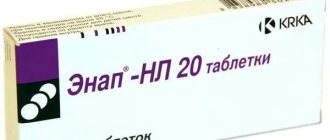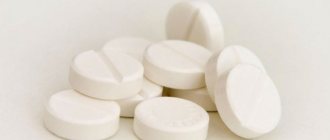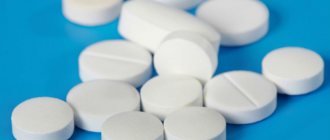Mildronate is a medicine that helps activate the body's defenses and stimulates metabolism. As a rule, the drug is used to treat pathologies of the heart and blood vessels. The drug contains the active substance meldonium, which is also present in the cells of the human body. Like all medications, Mildronate has its own contraindications, so before starting therapy you must read the instructions and consult a specialist. Also, in case of long-term therapy, patients need to know whether Mildronate and alcohol are compatible.
Pharmacological properties
Mildronate is a structural analogue of the substance meldonium, which is present in the cellular structure of the human body.
In conditions of complete exhaustion of the body, when all systems work at an accelerated pace, Mildronate can restore the following functions:
- Maintains a balance between the need and supply of oxygen to cells.
- Helps eliminate toxic compounds.
- Protects cellular structures from deformation.
- Tones the body's defenses.
After a course of treatment with the drug, energy reserves are quickly restored, the person becomes able to withstand any physical and mental stress. Thanks to these qualities, Mildronate is prescribed for the treatment of various diseases, especially those associated with disorders of the circulatory system and impaired cerebral blood supply. In cardiology, the drug is used after myocardial infarction to inhibit the formation of necrotic areas and reduce the duration of the rehabilitation period. In case of heart failure, the drug can increase the contractility of the heart muscle and increase its susceptibility to physical activity.
Mildronate eliminates functional disorders of the nervous system in alcoholism, when a person has a severe withdrawal syndrome.
Use of the drug in the treatment of alcoholism
Abuse of alcoholic beverages causes not only psychological, but also physical dependence, against the background of which a person develops withdrawal syndrome. It can only occur in the case of chronic alcoholism, when the body contains a high concentration of ethanol breakdown products. The excretory system is not able to remove toxins on its own, so relief can only come with alcohol.
The drug is widely used in the treatment of chronic alcoholism, relieving alcohol intoxication after prolonged use of ethanol
The pharmacological effect of the drug is best manifested in the acute phase of alcohol intoxication, helping to eliminate all negative symptoms. The active component of the drug is quickly absorbed from the gastrointestinal system, reaching maximum concentration in the blood within 1.5-2 hours after use, and is excreted from the body within 12 hours.
Mildronate for alcoholism can only be prescribed by a narcologist; independent use of the drug is not recommended, as complications may arise that worsen the patient’s condition.
Which microelements can and cannot be combined
Microelements are building materials for many biological processes. Their compatibility has been well studied, which allows many pharmaceutical companies to produce various multivitamin medications that contain 2 or more active ingredients.
- Iron and copper interact with vitamin A and B2;
- Vitamin B2 increases the healing properties of zinc, which improves the absorption of A;
- Magnesium interacts with B vitamins, with the exception of vitamin B1;
- Bromine increases the absorption of phosphorus, calcium and magnesium;
- A good combination is zinc and selenium in combination with A and E, Omega-3.
Not all minerals interact well with vitamins. Some of them interfere with the absorption of beneficial components, while others reduce their effectiveness.
There are many examples of bad combinations of organic compounds:
- Vitamin B1 is poorly compatible with magnesium and calcium;
- Iron and copper interfere with the absorption of vitamin B2;
- Vitamin B9, together with zinc, promotes the formation of insoluble compounds, which impairs their absorption;
- Iron, copper and manganese make vitamin B12 inactive;
- Vitamin C enhances the removal of copper from the body.
In the process of producing multivitamins, the manufacturer always takes into account the permissible doses of one or another component of the medicine.
Mechanism of action in alcoholism
The effect of the drug in case of alcohol abuse is aimed at restoring the activity of the central nervous system.
In the complex therapy of alcoholism, the active substance of the drug has the following effects:
- eliminates limb tremors;
- improves thought processes and memory;
- increases the speed of reactions;
- restores performance;
- increases the body's sensitivity to stress.
After treatment with Mildronate, metabolism is activated in every structural unit of the body, and an increase in energy potential is also noted. Thanks to the protection of the heart muscle, the risk of developing heart attacks and cerebral ischemia is reduced.
The most dangerous combinations and consequences
The combination of alcohol and chemical-based drugs leads to serious disorders in the body, and sometimes to fatal consequences.
List of medications and their side effects in combination with alcohol:
| Name of group, drug | Negative results of interaction |
| Neuroleptics (tranquilizers, anticonvulsants, hypnotics) | Severe intoxication, up to cerebral coma |
| CNS stimulants (Theophedrine, Ephedrine, Caffeine) | Rapid increase in blood pressure, hypertensive crisis |
| Antihypertensives (Captofrin, Enalapril, Enap-N), diuretics (Indapamide, Furosemide) | Sudden drop in pressure, collapse |
| Analgesics, anti-inflammatory | Increased toxic substances in the blood, general poisoning of the body |
| Acetylsalicylic acid (Aspirin) | Acute gastritis, perforation of gastric ulcer and 12-PC |
| Paracetamol | Toxic liver damage |
| Hypoglycemic (Glibenclamide, Glipizide, Metformin, Phenformin), insulin | A sharp decrease in blood sugar levels, hypoglycemic coma |
Is the drug compatible with alcoholic drinks?
Most patients are interested in the question: can Mildronate be taken with alcohol?
It is strictly forbidden to drink alcohol when treating cardiovascular pathologies.
Experts do not recommend combining this drug with drinking alcohol, since the active substance meldonium can accumulate in the body, which increases the risk of distorting the pharmacological effect of the drug.
When drinking alcoholic beverages, ethanol breakdown products are released, they negatively affect the activity of the heart muscle and the functional ability of brain cells, as a result of which the effectiveness of treatment is equal to zero.
Mildronate and alcohol, when used together, can cause a number of body reactions:
- sudden changes in blood pressure;
- allergic reactions in the form of severe itching and rashes;
- weakness, lethargy;
- increased heart rate;
- psychomotor agitation;
- dyspeptic disorders in the form of diarrhea and flatulence;
- labored breathing;
- nausea that ends with vomiting;
- limb spasms.
It does not matter which method of administration the patient used, side effects occur after both the tablet and the injection.
If the drug was used as a therapeutic course, then alcohol consumption is contraindicated for 3 to 30 days, depending on the recommendations of the attending physician.
Organs affected by the toxin
The combined use of pharmacological agents and alcohol has a toxic effect on the internal organs and environments of the body. Alcohol, entering into a chemical reaction with a medicine, leads to poisoning, disrupts physiological processes, enhances or weakens the healing properties of drugs.
The liver suffers more than other organs. She gets hit twice. Many medications have a side effect - hepatotoxicity, destroy cells, and disrupt the physiology of the organ. In the liver, alcohol breaks down to ethanal, a substance 20-30 times more toxic than ethanol, which causes the death of hepatocytes.
Dangerous groups of drugs for the organ in combination with alcohol:
- Anti-inflammatory;
- Hormonal;
- Antibacterial;
- Antifungal;
- Glucose control agents for diabetes mellitus;
- Antituberculosis;
- Cytostatics (chemotherapy drugs);
- Tranquilizers (anti-epileptic, psychotropic).
In second place among the internal organs exposed to the harmful effects of alcohol together with medications are the heart and vascular system. Strong drinks during drug therapy constrict blood vessels and increase blood pressure. The simultaneous intake of alcohol and chemical substances leads to failure of the myocardium and increases the risk of developing an attack of angina pectoris and a heart attack.
A mixture of ethanol and pharmaceuticals disrupts the quality of the blood and reduces clotting. This is dangerous due to internal bleeding and strokes.
Features of combining the drug with alcohol
The interaction of Mildronate with alcoholic beverages is neutral, however, there is a risk of complications and side effects that negatively affect the human body.
The possibility of drinking alcohol during the therapeutic course depends on the underlying disease and the presence of concomitant pathologies. Thus, for diseases of the heart and blood vessels, it is not recommended to drink alcohol-containing drinks, since ethanol puts additional stress on the organs of the circulatory system.
To prevent interaction between the active substance and alcohol, it is recommended to leave a short period
There are situations when it is possible to combine medication with alcohol, but for this the patient must adhere to recommendations that do not allow the combination of ethanol and Meldonium in the body. When drinking alcohol, it is necessary to take into account the characteristics of the female and male body, since the fairer sex eliminates alcohol more slowly. Therefore, men are contraindicated to take the medicine within 24 hours after drinking it, and women should refrain from taking the medicine for 48 hours.
During treatment with this drug, it is not recommended to drink alcohol, as this may not bring the desired therapeutic effect. When they are used together, various reactions of the body develop, but they do not pose a threat to human life.
Who is Mildronate prescribed to?
The drug is a unique remedy due to its metabolic and antihypoxic effects. Mildronate normalizes energy metabolism and restores cell balance. Mildronate is used in neurology, cardiology, and sports medicine. In addition, Mildronate helps improve performance and is recommended for repeated stress.
Important! While taking Mildronate, you should carefully monitor the condition of your liver and kidneys. People taking the drug for a long time are required to monitor the condition of their internal organs.
The effect of Mildronate is aimed at helping to compensate for the lack of oxygen in cells.
The doctor prescribes Mildronate as an enhancement to complex treatment prescribed for the following symptoms:
- sudden decrease in endurance;
- physical exhaustion;
- with alcohol intoxication;
- as a restorative drug after severe surgery;
- to stabilize the central nervous system during stress and depression;
- from a hangover, when the delivery of energy to cells is disrupted;
- with manifestations of asthma and chronic bronchitis.
Mildronate is approved for use in children over 12 years of age if a diagnosis related to heart or vascular pathologies has been established.
As mentioned earlier, Mildronate helps restore the performance of athletes. Judging by the reviews, the product really improves performance, but does not improve individual sports skills.
In medical practice, there have been no cases of overdose when using Mildronate, but with intravenous use the following side effects occur:
- migraine;
- increased heart rate;
- decrease in blood pressure.
Reviews
Valery, 40 years old I used to suffer from alcoholism, but after successful treatment I quit, now I don’t take alcohol in any form. Recently I felt a significant deterioration in my condition; after work I felt severe weakness, dizziness, and pressure changes. I contacted my doctor. He diagnosed vegetative-vascular dystonia due to severe fatigue. I prescribed a course of taking Mildronate, after 14 days of use, sleep normalized, blood pressure stabilized, and most importantly, the body became more resilient to stress.
Marina, 32 years old Due to sedentary work and lack of physical activity, I developed osteochondosis and chronic fatigue syndrome. After a series of studies, the neurologist prescribed me a drug treatment regimen. Mildronate was on the list of medications. During 2 weeks of inpatient treatment, I was given intravenous injections of Mildronate. I didn’t immediately feel any improvement in my condition, but my sleep became stronger and I didn’t have any problems with dizziness. Perhaps everyone has their own individual sensitivity to the product, but at least I didn’t find any side effects.
Evgeniy, 30 years old, I started taking Mildronate on a regular basis, as I began to actively engage in sports. I take a tablet of the drug 2 hours before training at a dose of 1 mg. The effect is noticeable within a week, the body’s endurance has increased several times. However, I do not recommend combining the product with alcohol, because I drank beer once, after which I developed severe nausea and diarrhea.
Vitamin compatibility chart
The table will help you become more familiar with the possible combination of useful components.
- “+” - good;
- “-” - bad;
- “#” is neutral.
| A | IN 1 | AT 2 | AT 5 | AT 6 | AT 9 | AT 12 | WITH | E | D | |
| A | A | # | # | # | # | # | — | # | + | # |
| IN 1 | # | IN 1 | # | # | # | # | # | # | # | # |
| AT 2 | # | # | AT 2 | # | + | + | — | # | # | # |
| AT 5 | # | # | # | AT 5 | # | # | + | # | # | # |
| AT 6 | # | # | + | # | AT 6 | # | # | # | # | |
| AT 9 | # | # | + | # | # | AT 9 | + | # | # | # |
| AT 12 | — | # | — | + | # | + | AT 12 | — | — | # |
| WITH | # | # | # | # | # | # | — | WITH | + | # |
| E | + | # | # | # | # | # | — | + | E | # |
| D | # | # | # | # | # | # | # | # | # | D |





